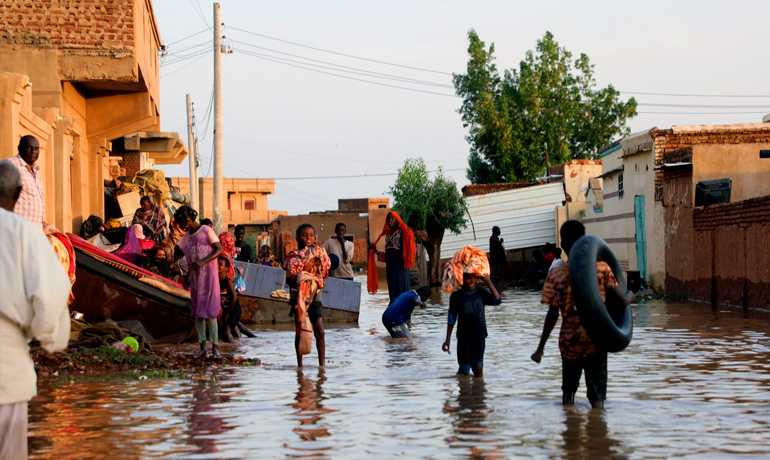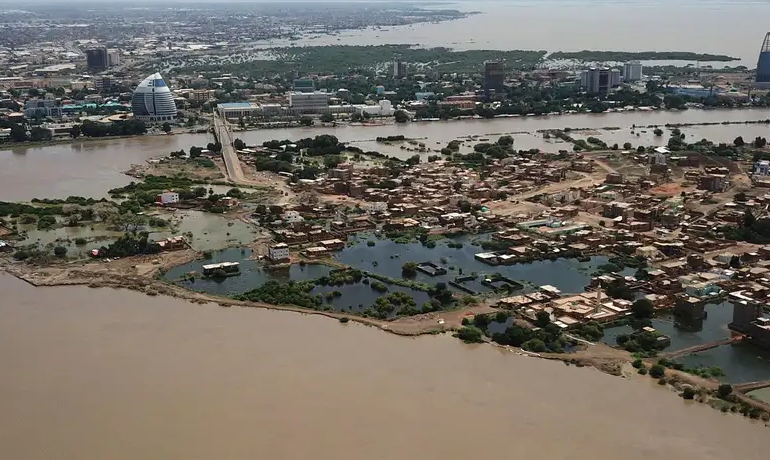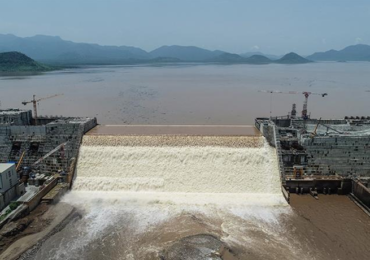More than any other time in history, now is the time for regional cooperation in the Nile River Basin.
In the summer of 2020, the Nile River reached its highest level since 1912 resulting in significant flooding in the Sudan. The flood, which is primarily driven by the Blue Nile River flow that originates in the rugged highlands of Ethiopia, has caused havoc. More than one 100 people are presumed dead and an additional 500,000 left homeless. News reports indicate several hundreds of millions of dollars in property damage and resettlement costs.
This devastation should not happen again.
The Sudan, along with its neighbor Egypt, is currently deadlocked in negotiating with Ethiopia regarding the filling and operations of The Grand Ethiopian Renaissance Dam (GERD). The GERD is being built by Ethiopia on a major Nile River tributary. Ethiopia considers the dam its ticket to liberate its people from frequent famine and put lights in the houses of an estimated 65 million of its population. After several starts and stops over the last several years, negotiations are currently underway through the auspices of the African Union (AU) and his Hon. Cyril Ramaphosa, the President of South Africa. South Africa is also the current chair of AU. South Africa’s involvement came about after a failed negotiation in February of this year mediated by the United States and the World Bank to bring the three countries together to reach a solution. In walking out of that negotiation, Ethiopia complained that the United States played favoritism. The former U.S. ambassador to Ethiopia, David Shinn, said the United States “seems to be putting its thumb on the scale in favor of Egypt.”
Soon after the three countries would restart their negotiations only to stop them again. This was followed by Egypt bringing the matter to the United Nations Security Council (UNSC) this June. The UNSC, after listening to both sides, advised them to continue their dialog with AU.
Flooding may have come on the forefront of the GERD negotiation
Much of the tripartite discussions among Egypt, Ethiopia, and the Sudan were focused on disagreements surrounding drought time Nile River flow and on reaching an agreement on how to resolve disagreements. However the current devastating flooding in the Sudan has shed a new light on the value of the GERD in mitigating flooding impacts to downstream countries and has created a new potential for cooperation in the region. The Ethiopian side has been highlighting flood control to downstream countries as one of the regional benefits of the mega dam the country is constructing and is currently 75% complete. There isn’t much Sudan can do to control devastating flood flow coming from Ethiopia other than having a dam built in its upstream neighboring country.
This is a similar situation that forced the United States and Canada to collaborate on dam building and coordinate operations of cascades of dams in the Columbia River Basin. The Ethiopian side has been insisting that the GERD will be a savior for the Sudan in terms of flood protection as well as having a regularized river flow that will allow the Sudan to increase its agricultural production significantly. Sudanese water storage capacity at its Roseires Dam which is only about 100 kilometres (62 miles) from the GERD is 7.4 Billion Cubic Meters (BCM). The completion of the GERD would increase the Sudan’s water storage capacity at its Roseiress and Merowe Dams by more than 270%, creating a “cloud water storage”. In addition to flood protection, the GERD would significantly increase Sudan’s year-round groundwater use and replenishment, and achieve higher agricultural production. Egypt won’t say it out loud, but its opposition to the GERD stems from a concern that the Sudan may use its Nile River allocation to its full extent, a right based on a 1959 agreement between the two countries for which Ethiopia is not part of. The recent declaration of intent by Egypt on buying land and using the Sudan’s “abundant water” is seen by some observers as a strategic move in that direction.

Devastating flooding shouldn’t happen in the future
Given the level of human and property damage, it is not surprising that the current flooding situation in the Sudan might be changing the conversation and narrative in terms of what the GERD would bring to the region in saving lives. Now, in addition to drought time resource allocation that has dominated the GERD negotiation talks in the past, these neighboring countries should worry about the consequences of devastating flooding as well. The GERD, once more, is in the middle of it. While briefing his cabinet recently, Prime Minister Abdallah Hamdok of Sudan said “When the construction of the Ethiopian Renaissance Dam will be completed, it is expected that the flow of the Blue Nile will be regulated, and Sudan will no longer suffer that much from floods.”
While the exact amount of river flow causing this devastating flood this summer is still being measured, the initial assessment of similar floods in the past (e.g., 1988) and magnifying it by 25% to 50% more would still have been accommodated by the GERD, if the dam were in operation today. This means the human loss suffered by the Sudan could have, potentially, been avoided. This would require having the GERD storage at 55% to 66% full at the beginning of the rainy season in June. The Blue Nile flow is highly seasonal with 70% of the annual volume occurring in the month of July through September. Understanding the appropriate flood space available at the beginning of the rainy season should be easy to implement thanks to advances in seasonal hydrologic predictions and reservoir operation that would allow water resource managers an ability to use long-range weather forecast and adjust their operations accordingly. Since the GERD releases are tied to hydropower production, additional flood protection related releases deemed necessary and out of initial agreement can be negotiated and the dam owner could be compensated to operate in a way that can help downstream countries overcome such unexpected circumstances. Similar operational agreements are implemented in the so-called VarQ operating regime in the Columbia River basin between the US and Canada.
Knowing that this level of devastation can be completely avoided in the future should encourage a resolution to the ongoing negotiation between the three countries regarding the GERD. With climate change one can expect even more rainfall variability in the future and as a result huge swings in year over year Nile River flows. Through cooperation, the region should be able to manage itself using science to drive a sound decision making process.
It shouldn’t have to be this deadly next time.


